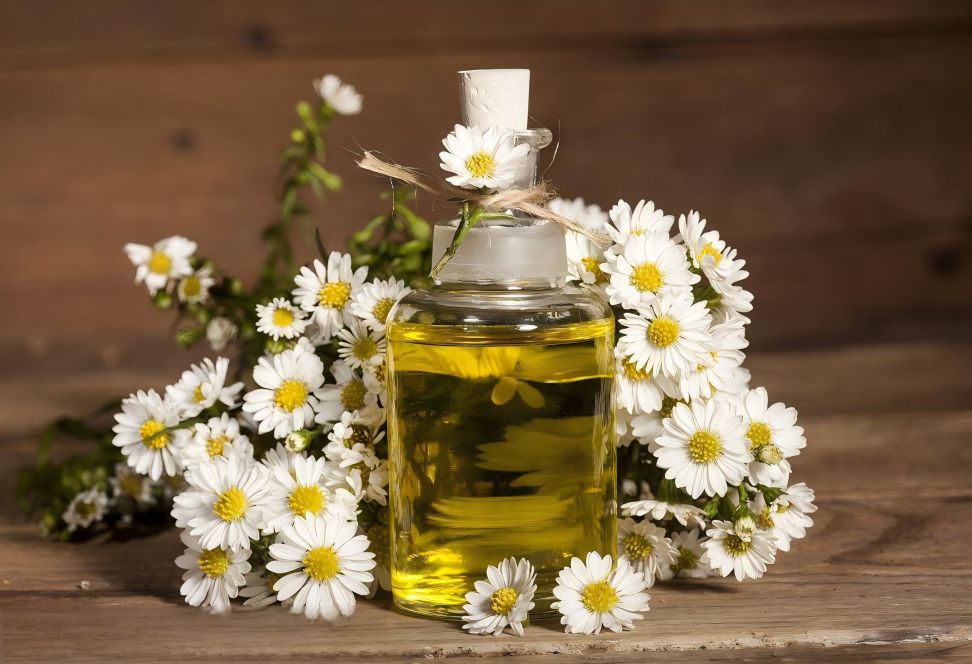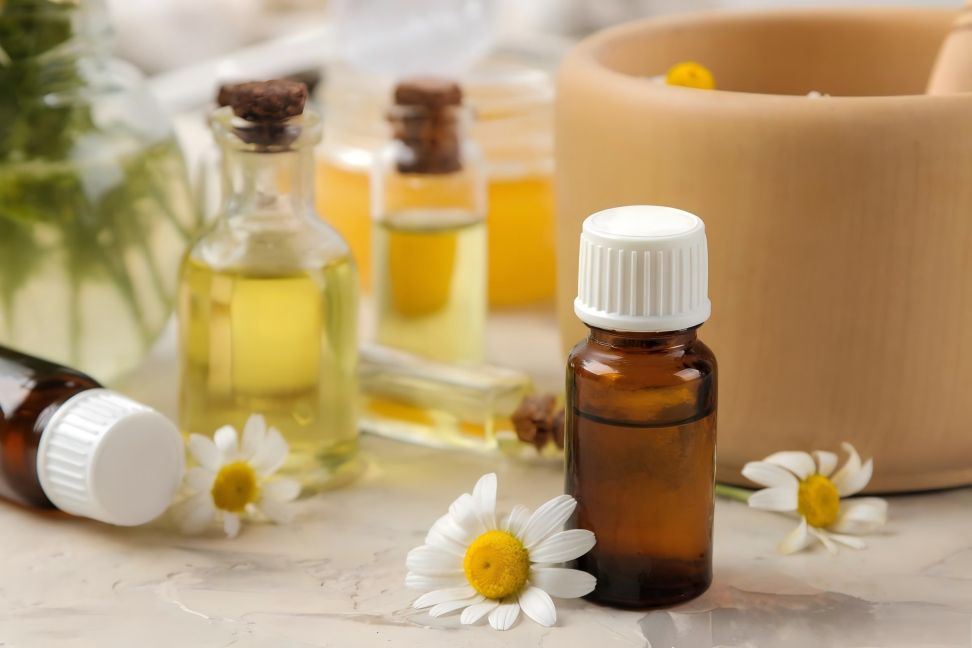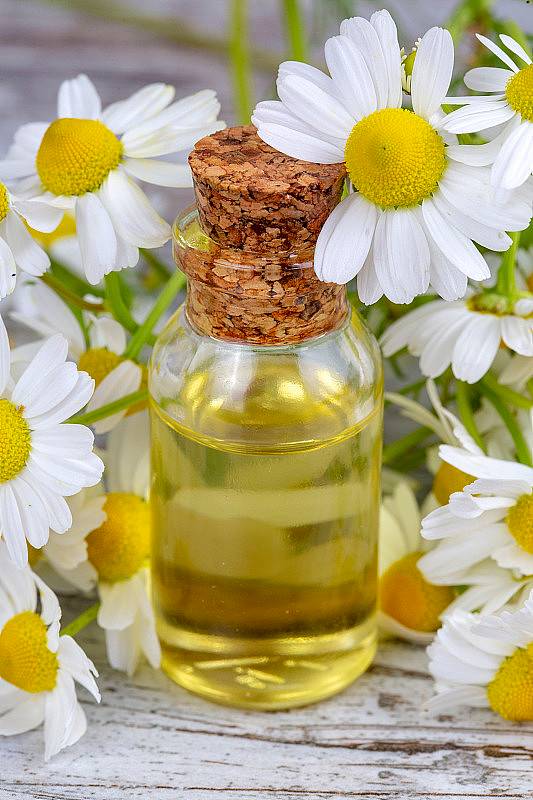Supercritical Chamomile Essential Oil for High-Performance Skincare Formula
Chamomile, this European-originating Asteraceae plant, is renowned worldwide for its exceptional soothing properties. It serves not only as a key ingredient in traditional floral teas but also as a highly sought-after natural active ingredient in premium skincare products. Its essential oil contains over 116 identified active compounds, including α-chamazulene, linalool, and various flavonoids. These components collectively confer chamomile's remarkable soothing, antioxidant, and skin-repairing properties.
However, traditional extraction methods struggle to simultaneously achieve high essential oil purity, solvent-free residue, and complete preservation of active components. Green Spring Technology has successfully overcome this industry challenge by employing innovative supercritical CO₂ extraction combined with molecular distillation purification technology. Through precise optimization of process parameters, we achieve efficient extraction and refinement of chamomile essential oil without the need for chemical co-solvents, ensuring absolute purity and high biological activity.
This advanced process delivers three core advantages:
· Ultimate Purity & Safety: Zero solvent addition or residue throughout, meeting the highest international safety standards for cosmetic ingredients;
· High Active Ingredient Retention: Gentle extraction perfectly preserves core active components like α-bisabolene, delivering superior efficacy;
· Consistent Quality Stability: Process parameters optimized through orthogonal experiments ensure stable composition and consistent quality in every batch.
Green Spring Technology is dedicated to providing premium, reliable chamomile essential oil ingredients for high-end skincare, natural personal care, and maternal-infant brands, empowering clients to create next-generation star products that are highly effective, safe, and pure.
Technology Empowering Pure Skincare: Green Spring Technology's Supercritical CO₂ Extracted Chamomile Essential Oil Redefines Skincare Ingredient Standards
Utilizing internationally advanced supercritical CO₂ extraction and molecular distillation purification technology, Green Spring Technology extracts highly active essential oils from premium Xinjiang Yili chamomile. We are dedicated to providing pure, effective, and stable natural ingredient solutions for premium skincare brands.
Core Process Advantages:
Through precise orthogonal testing optimization, we established optimal supercritical CO₂ extraction parameters (pressure: 30 MPa, time: 120 min, temperature: 50°C). Under these conditions, essential oil extraction rates reach 4.13%, maximizing retention of chamomile's active components. Following extraction, an innovative multi-stage purification process combining molecular distillation effectively removes waxes and solvent residues, ensuring the final product exhibits pure color, rich aroma, and significant biological activity.
Quality Assurance:
· High Bioactive Retention: Precise temperature and pressure control ensures efficient extraction and stable presence of core soothing and repairing components like α-bisabolene and flavonoids.
· Ultimate Purity: No chemical carriers added throughout the process; ethanol and waxes are completely removed during molecular distillation, meeting international cosmetic ingredient safety standards.
· Batch Consistency: Scientifically optimized process parameters ensure uniform essential oil composition and stable extraction rates across production batches.

Application Prospects:
This essential oil is ideal for premium soothing creams, serums, sensitive skin care, and infant/child skincare products, significantly enhancing formulations' natural properties and functional value.
Green Spring Technology harnesses science to restore nature's energy, providing customers with reliable chamomile essential oil ingredient solutions while jointly advancing the beauty industry toward safer, more effective, and sustainable practices.
Green Spring Technology employs supercritical CO₂ extraction combined with molecular distillation purification technology, successfully optimizing the optimal process parameters for chamomile essential oil extraction (extraction pressure 30MPa, time 120min, temperature 50°C). The final product achieves an extraction rate of 4.13%, truly unifying high activity with high purity.

By choosing Green Spring Technology's supercritical chamomile essential oil, you gain these core advantages:
· Exceptional efficacy: Fully preserves key active compounds like α-bisabolene, significantly enhancing products' soothing, restorative, and antioxidant properties;
· Ultimate safety and purity: Zero solvent addition or residue throughout the process, compliant with international cosmetic ingredient safety standards—ideal for premium skincare and sensitive skin formulations;
· Authentic Natural Aroma: Faithfully recreates chamomile's natural fragrance, delivering a pleasant, premium sensory experience;
· Consistent Quality Control: Scientifically optimized process parameters ensure stable essential oil composition and consistent extraction rates across batches, guaranteeing formulation reliability.
Contact us at helen@greenspringbio.com or WhatsApp: +86 13649243917 to request complimentary chamomile essential oil samples and comprehensive technical documentation. Experience firsthand the exceptional quality and innovative potential supercritical extraction technology brings to your products. Let's collaborate to infuse your brand with natural, potent, and safe active ingredients!
References:
[1] Zheng Hanchen, Chen Haisheng. Compositional analysis of the essential oil of Chrysanthemum officinale[J]. Journal of Second Military Medical University, 1990, 11(2):123.
[2] Yang Yansong, Pan Langsheng. Isolation and structural determination of flavonoids in chamomile[J]. Applied Chemical Engineering, 2008, 37(6):697.
[3] ZHU Dongliang, ZHANG Xiaoyu, LIU Fei, et al. Preparation and compositional comparison of Roman chamomile oil from Xinjiang by water vapor distillation and simultaneous distillation extraction[J]. Flavor and Fragrance Cosmetics, 2016(3):25.
[4] KAISER C S, ROMPP H, SCHMIDT P C. Supercritical carbon dioxide extraction of chamomile flowers: extraction efficiency, stability, and line- lineinclusionofchamomilecarbondioxideextractinβ-cyclodextrin[J]. Phytochemical Analysis, 2004, 15(4):249.
[5] Lan Wei, Wang Ying, Hu Jianglan, et al. Response surface method for the optimization of total flavonoid extraction process in German chamomile[J]. Shizhen National Medicine National Medicine, 2018, 28(5):1086. [6] Chen Lichun, Mao Jianwei, Gong Jinyan. Study on the extraction process of apigenin from chamomile[J]. Natural Products Research and Development, 2013, 25(7):986.
[7] Fu Chunxue, Wu Dongmei, Wang Wenqiang, et al. GC-MS analysis of volatile oil of Roman chamomile from different origins[J]. Anhui Agricultural Science, 2018, 46(21):172. [8] WANG Jinbiao, ZHENG Gang. A method of extracting chamomile extract using supercritical carbon dioxide: 201310311685.7[P] .2013-11-27.
[9] GOLDMAN S, GRAY C G, LI W, et al. Predicting solubilities in supercritical fluids[J]. The Journal of Physical Chemistry, 1996, 100(17):7246.
-
Prev
Green Spring Technology Provides Natural Glutathione Powder Solutions
-
Next
Natural Black Rice Cyanidin 3 Glucoside: Driving Functional Food Innovation


 English
English French
French Spanish
Spanish Russian
Russian Korean
Korean Japanese
Japanese




